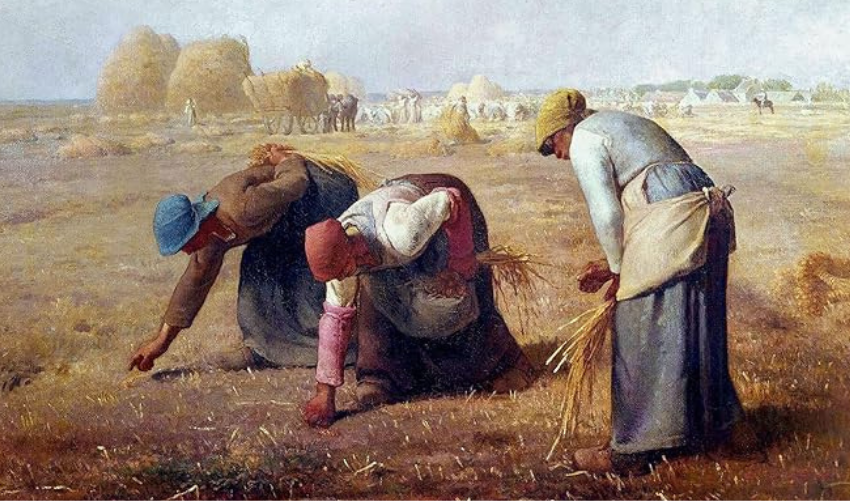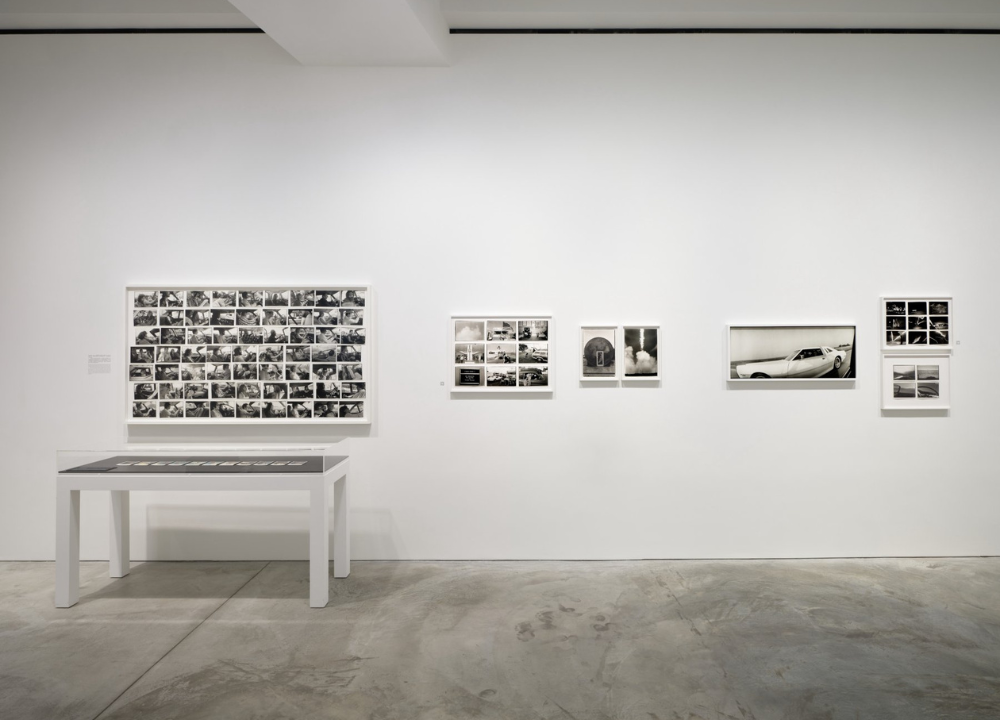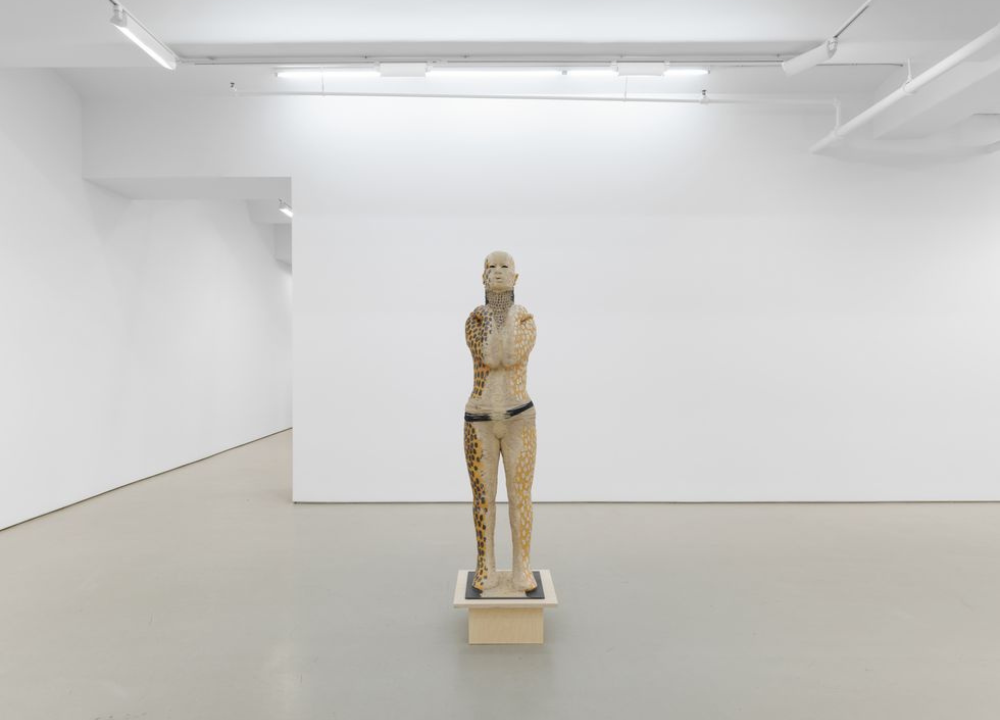This remarkable piece captures the strength and dignity of women working in the fields. It tells a story that resonates deeply with our values today.
You’ll uncover the fascinating background of “The Gleaners,” explore its significance in art history, and learn how it reflects the struggles and resilience of ordinary people. As you read on, you’ll gain a new appreciation for this masterpiece. Let’s dive into the world of Millet and discover why “The Gleaners” continues to touch hearts and inspire minds.
Millet’s Artistic Journey
The Gleaners by Jean-François Millet is a famous painting. It shows three women gathering leftover grain after the harvest. Millet’s artistic journey led him to create this masterpiece. His works often reflect the lives of peasants and rural scenes.
Early Influences
Millet was born in 1814 in France. He grew up in a farming family. Nature and rural life surrounded him. This early exposure shaped his view of the world. He admired the simple lives of peasants. Their hard work inspired him to paint.
Artistic Development
Millet began his formal training in art at a young age. He studied at various art schools in Paris. Here, he learned different techniques and styles. He was influenced by other artists. They encouraged him to focus on realism.
- Realism became a key element in his work.
- He wanted to show life as it truly is.
- Millet believed art should reflect everyday struggles.
The Gleaners: A Turning Point
In 1857, Millet painted The Gleaners. This work marked a significant moment in his career. The painting gained attention for its subject matter. It highlighted the dignity of the poor. Millet chose to portray their hard work and resilience.
- The painting shows three women bent over.
- They gather wheat from the ground.
- This act symbolizes their struggle for survival.
Legacy And Impact
Millet’s work influenced many artists. His focus on rural life inspired the Impressionists. They admired his ability to capture light and emotion. The Gleaners remains a key piece in art history.
Millet’s journey reflects his dedication to social issues. He used art to raise awareness about the lives of the poor. His paintings continue to resonate today.

The Gleaners: A Visual Analysis
Jean-François Millet’s painting, The Gleaners, captures the essence of rural life in 19th-century France. This artwork highlights the struggles and dignity of peasant women. Each element plays a vital role in conveying the message of hard work and resilience.
Composition And Perspective
The composition of The Gleaners is striking and purposeful. Millet positions three women in the foreground, gathering leftover grains. They form a triangle, drawing the viewer’s eyes toward them. The background shows a vast field, suggesting the enormity of their task.
The perspective in the painting enhances its emotional impact. Millet uses a low viewpoint, making the women appear larger than life. This choice elevates their status, showcasing their importance in society.
- Foreground: Three women gleaning
- Background: Expansive field and workers
- Triangle shape: Creates visual harmony
- Low viewpoint: Elevates women’s status
The table below summarizes key aspects of the composition and perspective:
| Element | Description |
|---|---|
| Women in Foreground | Focus on their labor and dignity |
| Background | Shows the scale of their work |
| Triangle Composition | Enhances visual interest |
| Low Horizon Line | Suggests vastness and struggle |
Use Of Color And Light
Millet’s use of color in The Gleaners is both intentional and evocative. He employs earthy tones like browns and greens. These colors reflect the natural environment and the women’s connection to the land. The warm hues evoke feelings of warmth and labor.
Light plays a crucial role in the painting. Millet captures the soft glow of sunlight. This light illuminates the women, highlighting their hard work. The contrast between light and shadow adds depth.
- Earthy Colors: Connects to nature
- Warm Tones: Evokes feelings of labor
- Soft Light: Highlights the women
- Contrast: Adds depth to the scene
The following table outlines the impact of color and light:
| Element | Impact |
|---|---|
| Earthy Tones | Reflects rural life |
| Warm Hues | Creates emotional connection |
| Sunlight | Illuminates the subjects |
| Shadows | Adds depth and realism |
Themes In The Gleaners
The themes within the painting reveal much about labor, dignity, social class, and poverty. Millet’s portrayal invites viewers to reflect on these significant issues in society.
Labor And Dignity
In The Gleaners, labor emerges as a central theme. The women in the painting work hard to gather leftover grain after the harvest. Their toil is not glamorous, yet it is vital. Millet shows that every job holds value. This message is clear in the expressions of the women. They focus on their work with determination.
Here are some key points about labor and dignity in the painting:
- Hard work brings a sense of purpose.
- Each woman is depicted with strength and grace.
- The act of gleaning is a symbol of resilience.
Millet’s brushstrokes convey the physical effort involved. He emphasizes the dignity in their labor. The women do not shy away from their work. Instead, they embrace it as part of their identity. This portrayal challenges societal views on manual labor.
Social Class And Poverty
The Gleaners also addresses social class and poverty. The women represent the lower class, struggling to survive. Their clothing is simple and worn, reflecting their economic status. Millet’s choice to depict these women highlights the plight of the poor in 19th-century France.
Key aspects of social class and poverty in the artwork include:
- Contrast between the rich and the poor.
- Gleaning as a last resort for survival.
- Society’s indifference to the struggles of the lower class.
Millet’s painting serves as a social commentary. It sheds light on the harsh realities faced by the impoverished. The women’s hard work is often overlooked. Yet, they play an essential role in the agricultural economy.
Historical Context
The painting The Gleaners by Jean-François Millet captures a moment in 19th-century France. It shows three women gathering leftover grains after the harvest. This artwork reflects the social and economic changes of the time.
19th Century France
In the 19th century, France underwent major changes. The country faced political turmoil and social upheaval. The aftermath of the French Revolution still affected people’s lives. Many struggled to make ends meet.
Rural life was tough. Farmers worked hard but earned little. The painting highlights the lives of the poor. Gleaning was a common practice. It allowed the poor to collect leftover crops. This practice was vital for survival.
- Rural Economy: Most people lived in the countryside.
- Social Classes: There were clear divides between the rich and the poor.
- Women’s Roles: Many women worked in fields, supporting their families.
Millet painted everyday life. His work focused on dignity and hard work. He wanted to show the beauty in the lives of the less fortunate. This painting made viewers think about social justice and empathy.
| Aspect | Details |
|---|---|
| Time Period | Early to mid-19th century |
| Location | Rural France |
| Main Subjects | Peasant women gleaning |
Impact Of The Industrial Revolution
The Industrial Revolution changed France dramatically. It began in the late 18th century and continued into the 19th century. Many people moved from farms to cities for work.
This shift affected rural communities. Many farmers faced competition from industrialized agriculture. Large farms became more common. As a result, small farmers struggled to survive.
- Urbanization: Cities grew rapidly as people sought jobs.
- Economic Disparity: Wealth concentrated in industrial cities.
- Changing Labor: Factory work replaced traditional farming jobs.
Millet’s work reflects these changes. He focused on the plight of rural workers. The painting serves as a reminder of their struggles. It calls attention to the harsh realities of life during this period.
Influence On Art And Society
This masterpiece shows three women gathering leftover grains in a field. Millet’s work captures the lives of the poor, highlighting their struggles. The painting influenced not only art movements but also societal views on labor and class.
Impressionism And Beyond
Millet’s work paved the way for the Impressionist movement. Artists like Claude Monet and Edgar Degas were inspired by his focus on everyday life. They admired how Millet depicted ordinary people with dignity. The Gleaners encouraged artists to explore light, color, and movement in new ways.
Key influences include:
- Focus on the Ordinary: Impressionists moved away from grand historical themes.
- Use of Color: Bright colors became a hallmark of the Impressionist style.
- Depiction of Light: Capturing natural light changed how art was created.
Millet’s style also influenced post-Impressionism. Artists like Vincent van Gogh and Paul Cézanne took inspiration from his subjects and techniques. They continued to explore peasant life, emphasizing emotion and form. The table below summarizes key elements of this influence:
| Artist | Influence from Millet |
|---|---|
| Claude Monet | Focus on light and color |
| Edgar Degas | Everyday scenes with movement |
| Vincent van Gogh | Emotion in peasant life |
| Paul Cézanne | Form and structure in nature |
Cultural Impact And Legacy
The Gleaners profoundly impacted society. Millet’s painting raised awareness of the plight of the poor. It sparked conversations about labor, social justice, and the dignity of work.
Millet’s legacy can be seen in various areas:
- Art Education: His work is studied in art schools worldwide.
- Social Movements: Activists use his themes to advocate for workers’ rights.
- Modern Art: Influences can be seen in contemporary artists who focus on social issues.
His work inspired numerous exhibitions and discussions on poverty and labor rights. The lasting impact of The Gleaners remains evident in both art and society.




